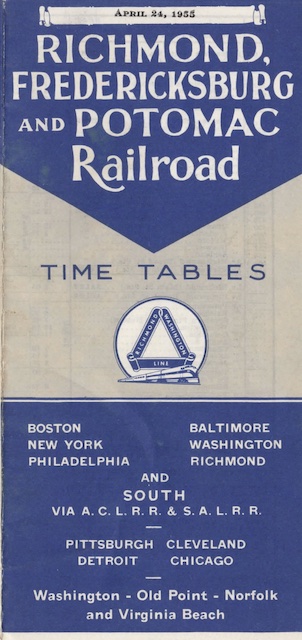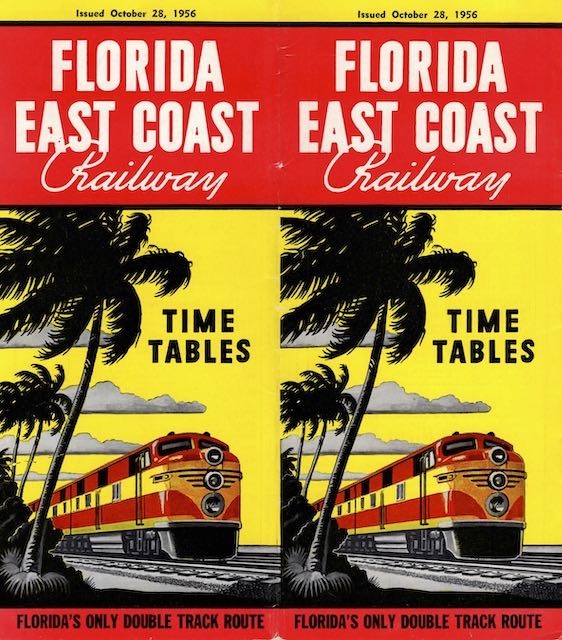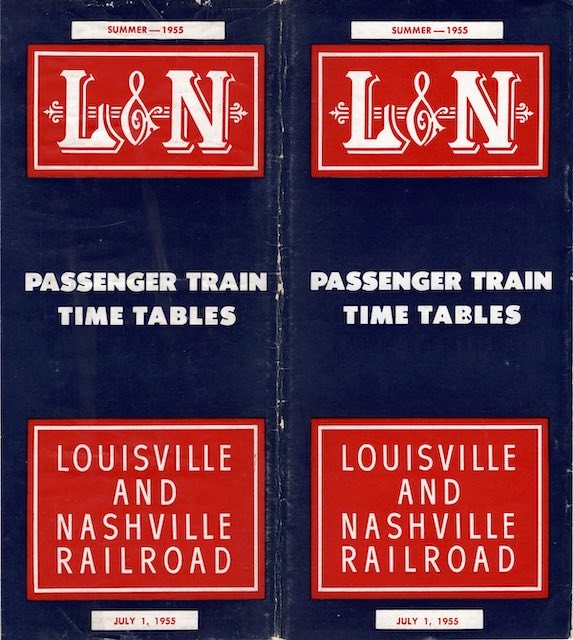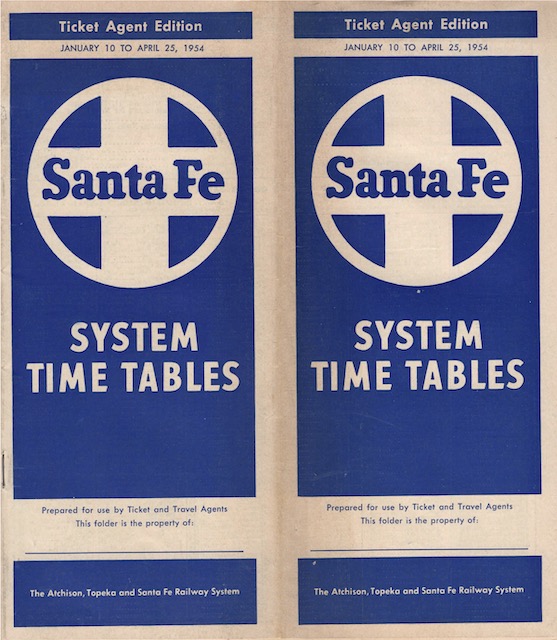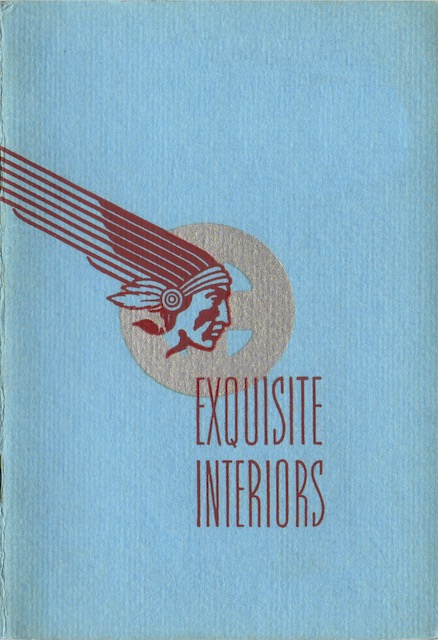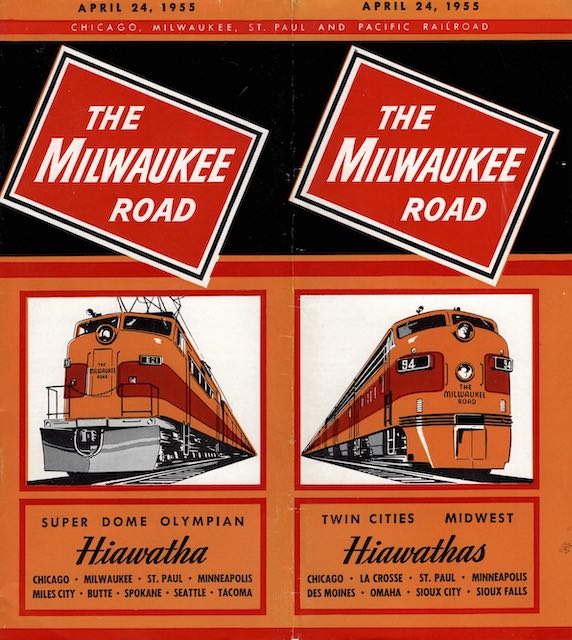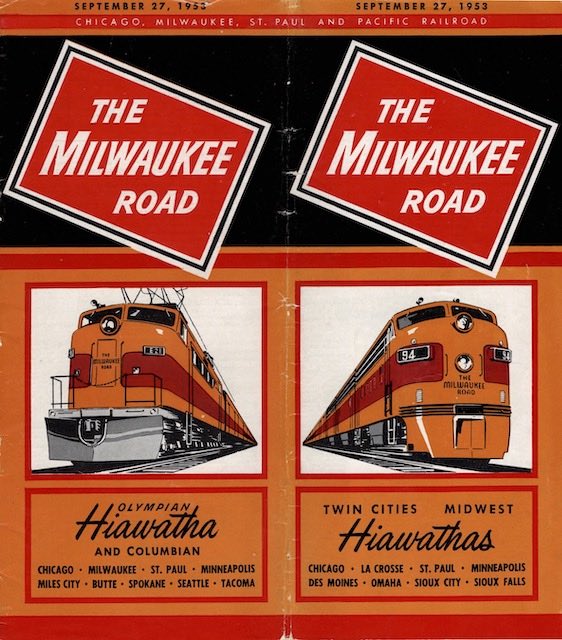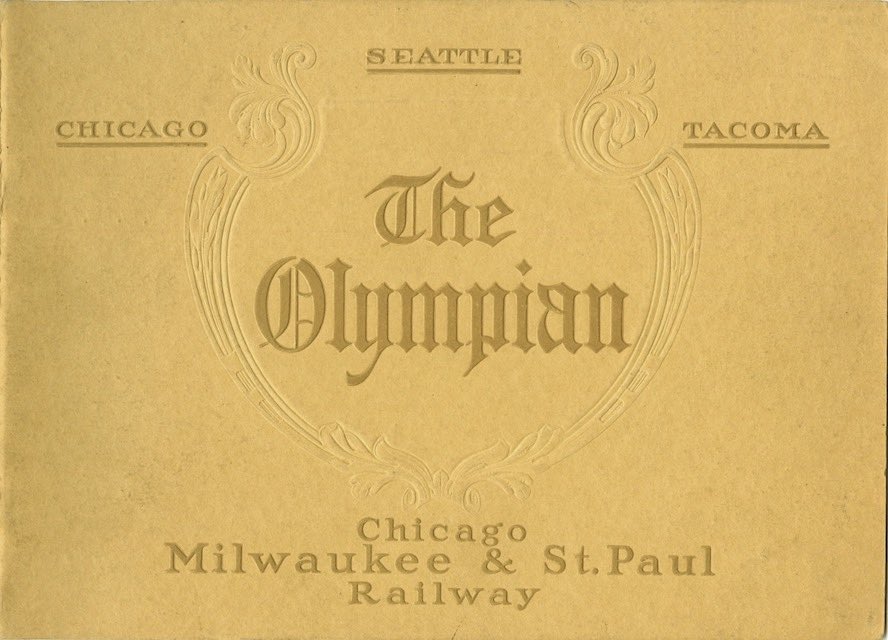Like its rival and eventual merger partner, Atlantic Coast Line, the Seaboard railroad had an impressive array of trains heading south from New York City (via PRR and RF&P) in 1956. At 9:50 am, the Silver Star departed for Florida followed by the less prestigious Sunland at 10:30 am. The Sunland was all-coach leaving New York, but it had a section from Norfolk/Portsmouth with some sleeping cars that joined the main train in Norlina, NC.
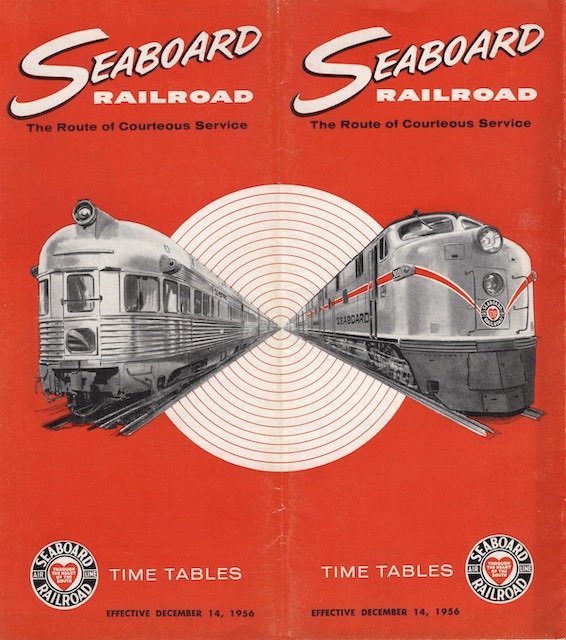 Click image to download a 17.4-MB PDF of this timetable contributed by Ellery Goode.
Click image to download a 17.4-MB PDF of this timetable contributed by Ellery Goode.
At 12:45 pm the Birmingham-bound Silver Comet left New York. This was followed by the Silver Meteor to Florida at 2:55 pm. At 5:30 pm, an unnamed, all-coach train departed for Birmingham. Then the Palmland left for Florida at 8:30 pm. There was also a mail train leaving New York at 3:50 am with coaches and mail for Atlanta. Continue reading

